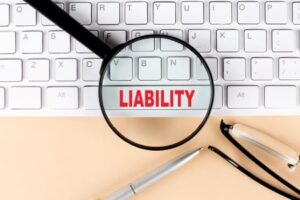How to Prove That Public Property is Dangerous

Dangers exist everywhere. Whether you are in your home, on a neighbor’s property, at a grocery store, or on a government road, you could get injured by a dangerous condition. When this happens, this is considered a premises liability claim. These cases can be complex when public property is involved.
A public entity may be liable for injury caused by a dangerous condition of its property if the entity either creates a dangerous condition or fails to remedy a dangerous condition when it has notice of the condition and had sufficient time to remedy the situation.
Proving Elements
To impose liability on a public entity, the injured party must prove the following five elements:
- A dangerous condition existed at the time of plaintiff’s injury.
- The plaintiff’s injuries were caused by the dangerous condition.
- The dangerous condition created a reasonably foreseeable risk of the kinds of injuries that plaintiff sustained.
- The public entity created the dangerous condition or knew about it before the plaintiff’s injury and could have taken measures to protect against it.
- The public entity’s failure to take action to protect against the dangerous condition was unreasonable.
What is a Dangerous Condition?
So this begs the question: what is a dangerous condition? The law defines it as a condition of property that creates a substantial risk of injury when the property is used in a reasonably foreseeable manner. This means that minor imperfections on public travel-ways are not dangerous conditions because they do not pose a substantial risk of injury to the public.
However, the courts are often under the belief that imperfections may directly cause people to suffer severe injuries or even death. Indeed, practically any condition of public property that is connected to an injury-causing event can amount to a dangerous condition and be considered under such a claim. For example, railroad tracks, small potholes, and roads that slope downward have been considered dangerous conditions under various court cases in New Jersey.
Establishing a Case
If you have been injured on public property, you will need to establish a strong case. This starts with hiring an experienced premises liability lawyer. Here are some steps you and your lawyer may take:
- Observe hazardous conditions. Physically inspect the property and note any hazardous conditions such as broken sidewalks, poorly lit areas, or lack of safety features like guardrails.
- Gather statistics. Research statistics related to accidents or injuries that have occurred in the area, such as traffic accidents and crime rates.
- Compare to standards. Compare the condition of the public property to established safety standards. Failure to meet standards strengthens your case.
- Compile evidence. Organize all the evidence you’ve gathered into a coherent presentation, including documentation, photographs, witness statements, and expert opinions.
Contact a New Jersey Personal Injury Lawyer Today
Dangerous conditions can exist anywhere but when a hazard exists on public property, proving a claim can be complex.
Get the legal help you need from a Morristown premises liability attorney from The Law Offices of Michael P. Burakoff. Owners of private property, commercial property, and government property are responsible for keeping their property safe. We can handle your case with ease. To schedule a free consultation, call (973) 455-1567 or fill out the online form.
Source:
advocatemagazine.com/article/2016-november/proving-a-condition-of-public-property-is-dangerous

